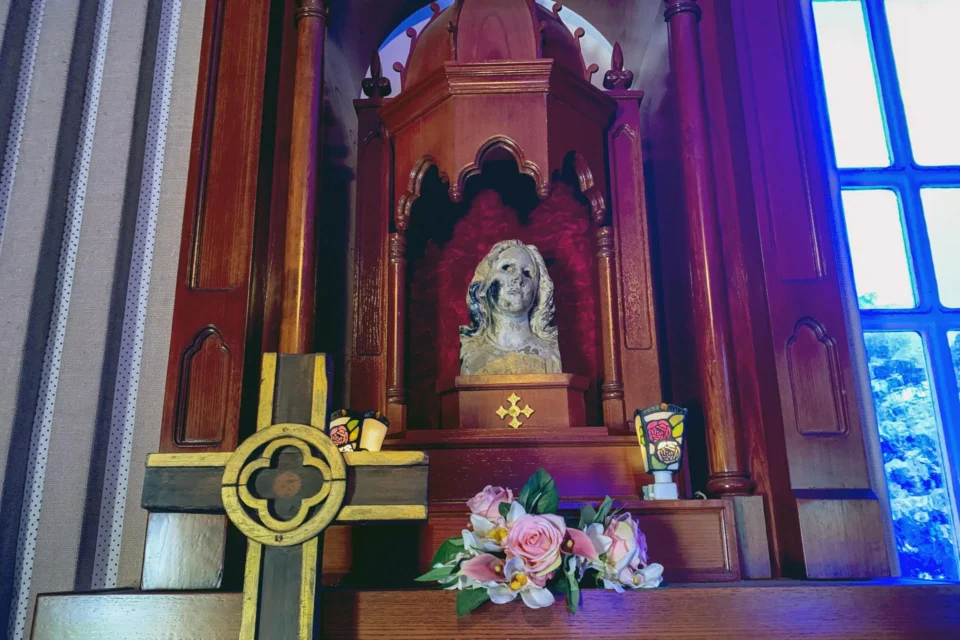By Antonio Hermosín Gandul
Nagasaki, Japan, Aug 4 (EFE).— Known as atom-bombed Mary (Hibaku no Maria), a charred wooden head of the Virgin Mary discovered in the ruins of Nagasaki Cathedral after the 1945 atomic bombing has become a powerful symbol of faith and resilience for Japan’s Christian community.
Originally inspired by a painting by Spanish Baroque artist Bartolomé Esteban Murillo, only the Virgin’s scorched head remains today.
Perched on one of Nagasaki’s many hills, Urakami Cathedral is located in a neighborhood with deep Christian roots dating back to the 16th century, when Jesuit missionaries introduced Christianity to Japan.
That legacy would be marked by centuries of persecution.

Japanese Christians faced brutal repression from feudal authorities, who saw Christianity as a threat to their rule.
Following the violent suppression of the Shimabara Rebellion (1637–1638), the faith was driven underground.
Yet it endured through the so-called kakure kirishitan, “hidden Christians,” who continued to practice their religion in secret, disguising their faith under the guise of Buddhism in places like Urakami and nearby islands.
It wasn’t until 1873 that Japan lifted the ban on Christianity. Toward the end of the 19th century, construction began on St. Mary’s Cathedral, also known as Urakami Cathedral or the Cathedral of the Immaculate Conception.
“We suffered persecution for centuries, and we suffered especially from the bombing,” said Kenichi Yamamura, the current dean of the cathedral, reflecting on the devastation of World War II.
On August 9, 1945, the US dropped the second, and so far, last, nuclear bomb used in warfare, codenamed “Fat Man,” on Nagasaki.
Due to a shift in weather conditions and flight plans, the bomb detonated just 500 meters from the cathedral.
Of the 12,000 Christians living in Urakami at the time, some 8,500 were killed, many during a packed Mass being held inside the church, which was completely destroyed.
In the days that followed, a monk from Urakami named Kaemon Noguchi searched the ruins and discovered the Virgin’s head amid the rubble.
Though charred, with hollowed eye sockets and a cracked cheek that many see as a tear, the face of the Virgin retained an expression of serenity and sorrow.

Father Noguchi brought the relic to a monastery in Hokkaido, where it remained until it was returned to the cathedral decades later, after its reconstruction.
The original statue, about two meters tall, had been hand-carved and painted, modeled after Murillo’s Immaculate Conception. It once stood on the main altar of Urakami Cathedral.
Today, ‘Hibaku no Maria’ holds a place of honor in the rebuilt cathedral, symbolizing both the horrors of nuclear war and the endurance of Nagasaki’s Christian community.
“This Virgin watches over all those who suffer in war,” said Dean Yamamura.
The original head is displayed on a small altar at the cathedral entrance, while a full-scale replica of the statue, based on Murillo’s painting, can be seen in a side chapel.
The bust also presided over the altar during a Mass celebrated by Pope Francis in Nagasaki in 2019.
Speaking at a local baseball stadium, the pontiff referred to the “wound that is difficult to heal” left by the atomic bombing and reiterated his call for a world free of nuclear weapons.
The survival of the Atom-Bombed Virgin is especially poignant considering the complete destruction of the cathedral.
Other relics retrieved from the ruins, including a shattered bell, a bent chalice, twisted candlesticks, and mutilated statues—are still preserved.
Beside the rebuilt church, one of the original bell towers also stands. It collapsed the night after the bombing with such force that residents feared a second bomb had struck. EFE
ahg-sk

